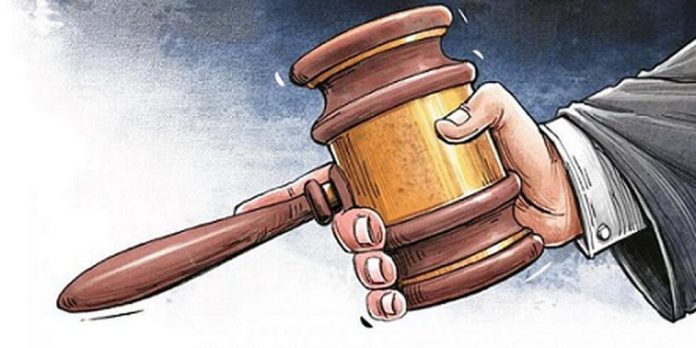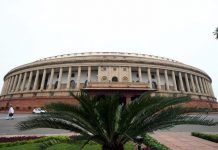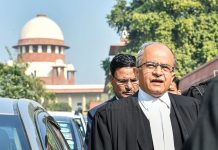This article is written by Swarnajit Das from Bengal Law College, West Bengal and the article has been edited by Khushi Sharma (Trainee Associate, Blog iPleaders) and Vanshika Kapoor (Senior Managing Editor, Blog iPleaders).
Table of Contents
Introduction
In the words of George Orwell, it is said “If liberty means anything at all, it means the right to tell people what they do not want to hear.” Freedom of speech is one of the most necessary things after food and shelter without which neither an individual can develop nor could any state prosper in the right direction.
Speech in its true sense is the gift of God to mankind. Thereby, it becomes necessary to utilize it in true faith in order to express oneself to the whole world. Speech is also considered to be a weapon that can both defend and kill human beings. Thus, it should be utilized wisely. Speaking quality and the skill of expression have made human beings different from animals. That is why, in every discussing platform, reasonable men always advocated for the freedom of speech and expression.
By means of speech, the human being has acquired the liberty to convey his thoughts, emotions, sentiments and feelings for others. Thus, freedom of speech and expression is a natural human right that an individual gets from birth. Therefore, according to the proclamation of the Universal Declaration of Human Rights (1948), “Everyone has the right to freedom of opinion and expression; the right includes freedom to hold opinions without interference and to seek and receive and impart information and ideas through any media and regardless of frontiers”.
The Preamble of every Constitution depicts the objective and the basic purpose of the constitution and the Indian Constitution is no exception. The Preamble of the Indian Constitution reflects the actual spirit of the Constitution which depicts the liberty of thought, expression, belief, faith and worship. This spirituality and principle is again reflected and described widely in Article – 19(1)(a) of the Indian Constitution. This article falls in Part – III of the Indian Constitution which enumerates the Fundamental Rights guaranteed to the citizen of the country.
Free Speech in context with the Indian Constitution
The Indian Constitution was drafted in a properly planned manner and every essential thing was taken care of and that is why India emerged as one of the most well-governed democratic states. Part – III of the Indian Constitution from Article 12– 35 provides the detailed structure of the Fundamental Rights which are solely guaranteed to the citizens of the country.
This right speaks about the morality and basic right of an individual in the meaning of Right to equality (Article 14–18), Right of freedom (Article 19–22), Right against exploitation (Article 23–24), Right to freedom of Religion (Article 25–28), Cultural and Educational Rights (Article 29–30), Right to Constitutional Remedies (Article- 32) and Limitations on the enforcement of Fundamental Rights (Article 33-35).
Article- 19(1)(a) of the Indian Constitution i.e. freedom of speech and expression is a very sensitive part of the Constitution and it is prone to controversy. If it is used negligently, it may lead to ‘Defamation’ and ‘Contempt of Court’. Thus, the line should be drawn very carefully and perfectly otherwise it will devastate the whole system.
Special attention should necessarily be given to Article-19(2) of the Constitution of India before exercising Article – 19(1)(a). If the necessary limitations are not maintained, on the one hand, he can be booked under the allegation of ‘Defamation’ and on the other hand, there hangs the probability of prosecution for ‘Criminal Contempt’.
Article 129 of the Indian Constitution makes the Supreme Court of India as ‘Court of Record’ and also confers power to punish criminals for contempt of court. Similar power is conferred to the High Courts of the country by the Constitution of India under Article 215 which makes the High Court ‘a court of record’. The Supreme Court and the High Courts of the Country have the power to adjudicate criminal contempt proceedings.
Statutory provision related to contempt
Section-10 of the Contempt of Courts Act, 1971 clearly empowers the High Court to punish the subordinate court in the matter of contempt, if the latter crosses its jurisdiction and judicial limitation. Similarly, Section- 15(2) of the same act clearly defines that even in the case of criminal contempt of subordinate court, proceeding of the contempt is to be initiated by the High Court on a reference made to it by the subordinate court or any motion made to it by the Advocate General (or Law officer for any Union Territory). It is also important to mention that the High Court for the purpose of Contempt of Courts Act, 1971 would also include a court of the judicial commissioner.
Contempt of Court
Section – 2 of the Contempt of Court Act, 1971 gives a clear out a glimpse of ‘Contempt of Court’ which is divided into 2 (two) parts: –
- Civil Contempt; and
- Criminal Contempt.
“Civil Contempt” means willful disobedience to any judgement, decree, direction, order, writ or other processes of a court or wilful breach of an undertaking given to a court.
“Criminal Contempt” means the publication (whether by words, spoken or written, or by signs, or by visible representation, or otherwise) of any matter or the doing of any other act whatsoever which –
- Scandalises or tend to scandalise, or lowers or tends to lower the authority of any court; or
- Prejudices, or interferes or tends to interfere with the due course of any judicial proceeding; or
- Interferes or tends to interfere with, or obstruct or tends to obstruct, the administration of justice in any other manner.
Section-5 of the Contempt of Court Act, 1971 allows that fair criticism of judicial action is not contempt. This act also says that a person shall not be guilty of contempt of court for publishing any fair comment on the merit of any case which has been heard and finally decided.
The objective of the Contempt of Courts Act , 1971
In India, the crimes of contempt proceedings are dealt with Contempt of Courts Act, 1971. Contrary to the conception, the main objective of this act as mentioned in the Act as “… to define and limit the powers of certain courts in punishing contempt of courts and to regulate their procedure thereto.”
The concept and the basic theme behind this enactment can be best described by the pronouncement of Justice Wilmot in Rex v. Almon:
“And whenever men’s allegiance to the law is so fundamentally shaken, it is the most fatal and most dangerous obstruction of justice and…calls out for a more rapid and immediate redress than any obstruction whatsoever, not for the sake of the Judges as private individuals but because they are the channels by which the King’s justice is conveyed to the people …”
What is Criminal Contempt?
Section – 2(c) clearly defines criminal contempt as:
“‘Criminal Contempt’ means the publication (whether by words, spoken or written, or by signs, or by visible representations, or otherwise) of any matter or the doing of any other act whatsoever which─
(i) Scandalizes or tends to scandalize, or lowers or tends to lower the authority of any court; or
(ii) Prejudices, or interferes or tends to interfere with, the due course of any judicial proceeding; or
(iii) interferes or tends to interfere with, or obstructs or tends to obstruct, the administration of justice in any other manner;”
Scandalizing the sacred structure of the court
Scandalize or scandalizing is an attack on individual judges or the court as a whole with or without referring to certain particular cases creating unwarranted, disputed and defamatory opinions or statements on the courts or about the ability and skills of the judges which threaten the judicial pillars and democratic structure of the country. “Scandalising the Court” is the easy way to describe the crime of contempt which also includes publication by means of social media, print media, visual signs or through an oral medium. Although, it does not relate to any specific case (post or pending) or to any specific judge, it is scurrilous on the Judiciary as a whole and it cannot be entertained with soft hands.
However, the Court must make a keen notice that the judicial authority should not be confused while making the judgement in a manner like whether considering judges as a common individual. Where the contemptuous comments are made on the judge in his individual capacity and not as an officer/ authority of the court, the offence may amount to defamation but the same cannot be charged with contempt of court in that situation.
Prejudicing on the course of judicial pronouncement
Anything was done in express mode whether by speeches or writing misrepresenting and misinterpreting the proceeding of the court and other judicial pronouncement or prejudicing the public for or against a party amounts to contempt. Making a speech with an intention to influence the result of the pending trial, whether civil or criminal is a grave contempt. However, there will be no arisen of question on the intention of the contemnor whether the activity was done with calculated intention to influence the judicial order or not is of no priority.
Although, it is clearly defined in the Constitution that a fair criticism of judgement after the pronouncement of the judgement is permissible in law. However, making any statement (written or oral) or giving press interviews when the litigation is still under the jurisdiction or consideration of the court is strictly prohibited and if done by anyone, will be charged with contempt of court. Therefore, no lawyer or litigant should either give an interview, talk to the press or make any statement with regards to pending litigation before any court.
Defamation
Section – 499 of the IPC clearly defines Defamation as whoever, by words either spoken or intended to be read, or by sign or by visible representation makes or publishes imputation concerning any intending to harm or knowing or having reason to believe that imputation will harm, the reputation of such person is said to defame that person.
While exercising the full-fledged fundamental right of freedom of speech and expression, many individuals unknowingly cross the limitations mentioned in Article – 19(2) of the Indian Constitution which subsequently leads that individual to commit the crime of ‘Defamation’. The open access to the internet and social media gives every individual complete freedom to express one’s view and opinion which sometimes crosses extreme limits and if tends to lower the image of any individual or to lower the goodwill of any particular institution in a defamatory manner, the same person will be charged with defamation which is often known as ‘Cyber Defamation’.
Section – 469 of the IPC which deals with forgery for harming reputation has been amended by Information Technology Act, 2000 to include ‘electronic record forged’ which clearly says – whoever commits forgery, intending that the document or electronic record forged shall harm the reputation of any party, or knowing that it is likely to be used for that purpose, shall be punished with imprisonment of either description of a term which may extend to three years, and shall also liable to fine.
Intermediary Liability and Cyber Defamation
Section – 79 of the Information Technology Act provides safe ways and proper relief to intermediaries against any act of defamation. Section – 79 also clearly defines that an intermediary is not liable for third party information, data, links hosted on its platform. However, the safe ways and protection are limited to certain conditions i.e. an intermediary shall be liable if it initiates the transmission of the defamatory content.
How is Defamation differentiated from Free Speech
Article – 19(1)(a) of the Indian Constitution gives the essence of Free speech or Freedom of speech and expression to all the citizens of the country. However, these guaranteed fundamental rights are not always absolute and sometimes these rights are subjected to restriction on reasonable grounds. The constitution provides reasonable restrictions in order to create the protection of the reputation of another person which otherwise may fall within the ambit of the definition of defamation. It is also made clear that ant comment or remark which hampers the reputation of another person (unless the statement is true) would invite liability under the law of defamation.
Role of Judiciary on Defamation or Cyber Defamation
The Indian Judiciary plays a crucial role in the prevention of defamation or also keeps a keen eye on the cyber platform in order to combat cyber defamation. Judicial examination, scrutiny and critical analysis are the deep reasons for the unity and integrity of India. In the world of criticism, where people take just a minute to keep a caption to criticize someone or something on some issue through a vibrant platform like social media. Therefore, the Judiciary and IT departments are bearing huge responsibilities on their shoulders to keep a keen notice of every activity done on the digital platform by the citizens. They also need to keep a fair look that a fair and legitimate criticism with true facts is no defamation and criticism should not cross the decent limitation.
The Few of the case law and judicial pronouncements related to cyber defamation are as follows:
- The first-ever case on cyber defamation is SMC Pneumatics (India) Pvt Ltd v. Jogesh Kwatra (See Here) – In this case, a dissatisfied employee sent disparaging, defamatory, offensive and abusive emails to the company’s fellow employers and to its subsidiaries spread all over the world with an intention to lower the image and diminish the reputation of the company along with its managing director. The Delhi High Court granted ex- parte ad interim injunction restraining the defendant from defaming the plaintiff in both physical and on the cyber platform.
- M/S Spentex Industries Ltd. &Anr. Vs Pulak Choudhury (See Here) – In this case, the petitioner had filed for a compulsory and prohibitory injunction along with the recovery of ₹50,000/- as damages for the loss of reputation and business cycle due to defamatory emails sent by the defendants to the International Finance Corporation, World Bank, President of Republic of Uzbekistan and UZEREPORT (a news website portal and publisher of monthly news reports).
- Kalandi Charan Lenka v. State of Odisha (See Here) – In this case, the petitioner was stalked online and a fake account was created in her name. Moreover, obscene and indecent messages were sent to her friends from that account by the culprit. The main intention of the defendant was to diminish the reputation and defame the image of the plaintiff. The Odisha High Court held that the said act was done by the defendant and the offence falls within the ambit of the Cyber Defamation. Ant thereby, the accused became liable for the offence of defamation through the manner of obscene images and texts.
Recent controversy related to free speech and contempt of court
In today’s world, the controversy became a regular schedule for a few of the people and such amongst them were Shri Adv Prashant Bhushan, he is a lawyer by profession and a social activist and politician by passion. One of the recent and most controversial case related to ‘Contempt of Court’ in India was Adv Prashant Bhushan’s contempt case. The controversy draws the attention of the whole world and also occupied the headline of almost all the newspapers of the country. Thereby, the Supreme Court of India initiated suo moto contempt proceedings against Mr Bhushan (See Here) for his controversial tweet made against the then Chief Justice of India, Justice Sharad Arvind Bobde. In his 2009, interview with Tehelka Magazine wherein Mr Bhushan questioned the integrity of a past few Chief Justices of India. The 2009 Tehelka Magazine case was filed by Senior advocate Harish Salve in which the accused (Adv Prashant Bhushan) made allegations of corruption in the judiciary. Apart from Prashant Bhushan, the then ‘Tehelka Magazine’ editor, Mr Tarun Tejpal was also charged with Contempt of Court.
In 2010, the three-judge bench headed by Justice Altamas Kabir issued notice to Bhushan and Tejpal, but the case only came up for a hearing when the Supreme Court recently initiated a fresh contempt case against Bhushan.
In the year 2020, again Mr Bhushan rose with a controversy where one of his tweets made on 27th June, 2020 in which Mr Bhushan has written about the “role of the Supreme Court” in the “destruction” of the democracy during the last six(6) years and had also mentioned the “role of the last four (4) CJI’s” in it.
Another tweet again came out on 29th June, 2020, where Bhushan had commented on Bobde astride a Harley Davidson bike. He had questioned the then CJI for riding a bike without helmet and face mask while “he keeps the Supreme Court in lockdown mode.” Later, a constitutional bench found him guilty of the offence of committing Contempt of Court and he was fined ₹1/- for breaking the rule of law.
What are the defences available in Contempt Cases
There are many defences available against the allegation of ‘Contempt of Court’ and such are as follows:-
- Innocent publication (Section – 3) – This section shows that immunity attaches to certain statements or certain matters which may interfere or tend to interfere or obstruct or tend to obstruct the course of justice in connection with any civil or criminal proceedings pending at the time of the publication. However, if the person so publishing had at the time of its publication no reasonable grounds for believing that the proceeding was pending, the publication is described by this section as “innocent”.
- Fair criticism (section – 5) – This section clearly says that fair criticism does not come under the ambit of Contempt of Court. Thus, every citizen of India has got fundamental right to express oneself to the whole world. Free speech and expression also include criticism but that should be fair in nature. Moreover, no person is allowed to keep an opinion or criticize any case which is still sub- judice or pending in the court. Otherwise, it will lead to contempt proceedings.
- Truth as defence (Section – 13) – Section 13 of the Act enables the Court to permit justification by truth as a valid defence in any contempt proceedings if it satisfied that such a defence is in the public interest and the request for invoking the defence is bona fide in nature. Truth should ordinarily be allowed as a defence unless the Court finds that it is only a conspiracy to escape the consequences of the deliberate attempt of scandalising the Court.
Conclusion
“With great power comes great responsibility,” the phrase comes true in every instance of our life. At the same time, we can notice that technology has given many opportunities and convenience to human life. In actuality, technology provides a cushion to our life. However, there are many instances whereby the mistake or due to some technical glitch, we commit the wrong. The very best example can be Social Media without which human life will become standstill.
It gives a vibrant platform without reasonable restriction whereby, it gives the user complete liberty to say and express anything which unknowingly sometimes leads to the commission of ‘Defamation’ and ‘Contempt of Court’. In every democratic world, this is very necessary that there should be no bar on free speech and expression and at the same time, there should also be an imposition of reasonable restriction in order to prevent the structure of democracy and also to secure sovereignty and integrity of the country. So, it is very necessary from my point of view that a line should be drawn between free speech and contempt in a democratic world for smooth governance of the country.
LawSikho has created a telegram group for exchanging legal knowledge, referrals and various opportunities. You can click on this link and join:
https://t.me/joinchat/J_0YrBa4IBSHdpuTfQO_sA
Follow us on Instagram and subscribe to our YouTube channel for more amazing legal content.
 Serato DJ Crack 2025Serato DJ PRO Crack
Serato DJ Crack 2025Serato DJ PRO Crack











 Allow notifications
Allow notifications



